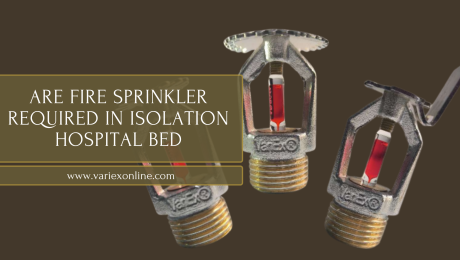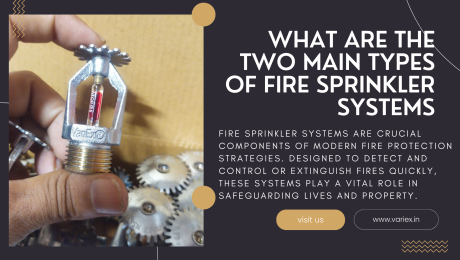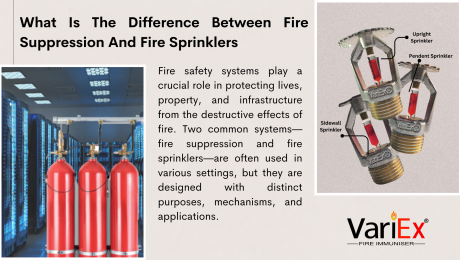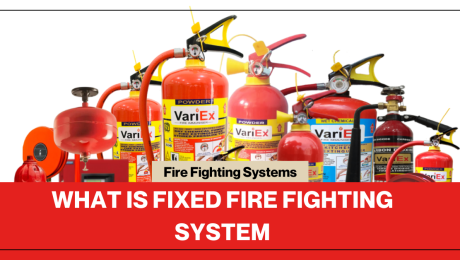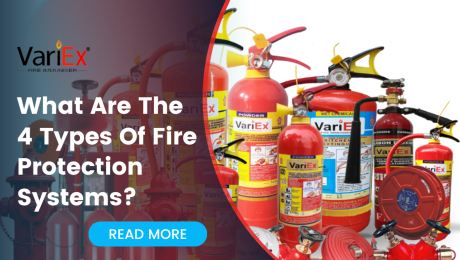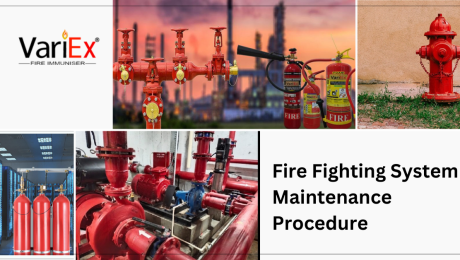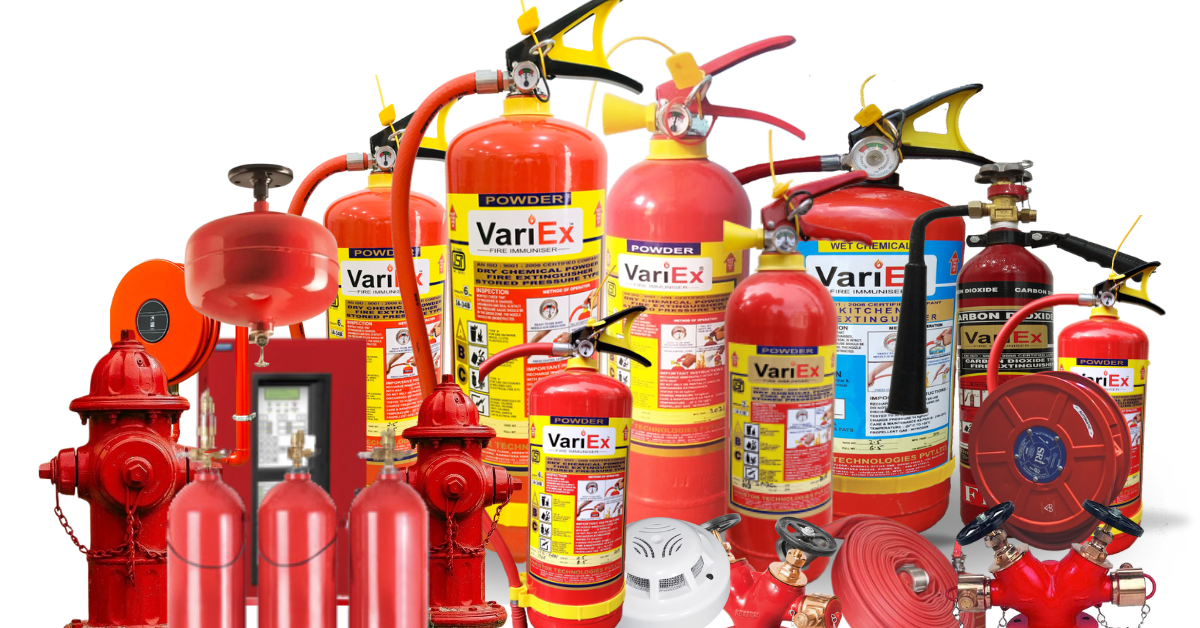Fire sprinkler heads are essential components of a fire suppression system, designed to detect and control fires in buildings. They consist of a nozzle with a heat-sensitive element, often a glass bulb filled with liquid or a metal link that melts at a specific temperature. When a fire occurs, heat causes the element to activate, releasing water from the sprinkler head. This helps to control the fire until emergency services arrive.
There are various types of sprinkler heads, including pendent (hanging down), upright (mounted on the ceiling), and sidewall (mounted on walls). The selection depends on the building’s layout and fire protection needs. The spacing and number of sprinkler heads are determined by local building codes and fire safety regulations. Regular inspection and maintenance are crucial to ensure they function properly in an emergency, preventing damage and loss of life.
Are Fire Sprinkler Required In Isolation Hospital Bed
Monday, 30 December 2024
by Sonu Shree
automatic fire sprinkler systemCommercial Fire Sprinkler Systemfire alarmfire alarm systemFire Alarm System for homefire extinguisherFire FightingFire fighting systemfire fighting system in bengaluruFire SafetyFire Safety at Homefire safety equipmentFire Sprinklerfire sprinkler headsFire Sprinkler in BengaloreFire Sprinkler in BengaluruFire Sprinkler SystemFire Sprinkler System for Buildingfire sprinkler system indiafire sprinkler system installationFire Sprinkler System PricePendent Fire SprinklerSidewall Fire SprinklerTypes of Fire Sprinklertypes of fire sprinkler systemsUpright Fire Sprinkler
- Published in Fire Fighting System, Fire Safety Equipment, Fire Sprinkler System
No Comments
Fire Fighting Equipment in Karnataka
Tuesday, 17 December 2024
by Sonu Shree
Automated Modular Fire Suppression Systemautomatic fire suppression systemautomatic fire suppression system for vehiclesBenefits of fire suppressionfire alarmfire alarm systemFire Alarm System for homefire extinguisherFire FightingFire fighting systemfire fighting system in bengaluruFire SafetyFire Safety at Homefire safety equipmentFire Sprinklerfire sprinkler headsFire Sprinkler in BengaloreFire Sprinkler in BengaluruFire Sprinkler SystemFire suppressionFire Suppression in Buildingsfire suppression systemFire Suppression System in BangaloreFire Suppression System Suppliers
Fire Fighting Equipment in Bengaluru
Tuesday, 17 December 2024
by Sonu Shree
fire alarmfire alarm systemFire Alarm System for homefire extinguisherFire FightingFire fighting systemfire hydrant systemFire SafetyFire Safety at FestivalsFire Safety at Homefire safety equipmentFire Sprinklerfire sprinkler headsFire Sprinkler in BengaloreFire Sprinkler in BengaluruFire Sprinkler SystemFire Sprinkler System for Buildingfire sprinkler system indiafire sprinkler system installationFire Sprinkler System PriceFire suppressionfire suppression system
Fire Fighting Equipment in India
Tuesday, 17 December 2024
by Sonu Shree
Automated Modular Fire Suppression Systemautomatic fire suppression systemBenefits of fire suppressionfire alarmfire alarm systemFire Alarm System for homefire extinguisherFire FightingFire fighting systemfire fighting system in bengaluruFire SafetyFire Safety at Homefire safety equipmentFire Sprinklerfire sprinkler headsFire Sprinkler in BengaloreFire Sprinkler in BengaluruFire Sprinkler SystemFire suppressionFire Suppression in Buildingsfire suppression systemFire Suppression System in BangaloreFire Suppression System Suppliers
Best Fire Safety Products in India
Tuesday, 17 December 2024
by Sonu Shree
fire alarmfire alarm systemFire Alarm System for homefire extinguisherFire FightingFire fighting systemfire fighting system in bengalurufire hydrant systemFire Safety at Homefire safety equipmentFire Sprinklerfire sprinkler headsFire Sprinkler in BengaloreFire Sprinkler in BengaluruFire Sprinkler SystemFire suppressionFire Suppression in Buildingsfire suppression systemFire Suppression System in BangaloreFire Suppression System Suppliers
Top Fire Safety Products in India
Tuesday, 17 December 2024
by Sonu Shree
2KG fire extinguishers4 KG Fire Extinguisher6 KG Fire Extinguishers9 KG Fire Extinguishersautomatic fire suppression systemfire alarmfire alarm systemFire Alarm System for homefire extinguisherFire FightingFire fighting systemfire fighting system in bengaluruFire SafetyFire Safety at Homefire safety equipmentFire Sprinklerfire sprinkler headsFire Sprinkler in BengaloreFire suppressionFire Suppression in Buildingsfire suppression systemFire Suppression System in Bangalore
Top Fire Safety Products in Mumbai
Tuesday, 17 December 2024
by Sonu Shree
2KG fire extinguishers4 KG Fire Extinguisher9 KG Fire Extinguishersfire alarm systemFire Alarm System for homefire extinguisherFire FightingFire fighting systemfire fighting system in bengaluruFire Safetyfire safety equipmentFire Sprinklerfire sprinkler headsFire Sprinkler in BengaloreFire Sprinkler in BengaluruFire Sprinkler Systemfire sprinkler system indiafire sprinkler system installationFire Sprinkler System PriceFire suppressionFire Suppression in Buildingsfire suppression systemFire Suppression System in Bangalore
Best Fire Safety Products in Mumbai
Tuesday, 17 December 2024
by Sonu Shree
Automated Modular Fire Suppression Systemautomatic fire suppression systemautomatic fire suppression system for vehiclesBenefits of fire suppressionfire alarmfire alarm systemFire Alarm System for homefire extinguisherFire FightingFire fighting systemfire fighting system in bengalurufire hydrant systemFire SafetyFire Safety at Homefire safety equipmentFire Sprinklerfire sprinkler headsFire Sprinkler in BengaloreFire Sprinkler in BengaluruFire Sprinkler SystemFire suppressionFire Suppression in Buildingsfire suppression systemFire Suppression System in BangaloreFire Suppression System SuppliersTypes of fire suppression systemvehicle fire suppression system
Fire Safety Products in Mumbai
Tuesday, 17 December 2024
by Sonu Shree
2KG fire extinguishers4 KG Fire Extinguisher6 KG Fire Extinguishers9 KG Fire ExtinguishersABC fire extinguisher refillingfire alarmfire alarm systemfire extinguisherFire FightingFire fighting systemfire fighting system in bengalurufire hydrant systemFire SafetyFire Safety at HomeFire Safety at Workplacefire safety equipmentFire Sprinklerfire sprinkler headsFire Sprinkler in BengaloreFire Sprinkler in BengaluruFire Sprinkler SystemFire Sprinkler System for Buildingfire sprinkler system indiaFire suppressionFire Suppression in Buildingsfire suppression systemFire Suppression System in Bangalore
Fire Safety Products in Karnataka
Tuesday, 17 December 2024
by Sonu Shree
2KG fire extinguishers6 KG Fire Extinguishersabc fire extinguisherfire alarmfire alarm systemFire Alarm System for homefire extinguisherFire ExtinguishersFire Extinguishers BallFire FightingFire fighting systemfire fighting system in bengaluruFire SafetyFire Safety at HomeFire Safety at hospitalfire safety equipmentFire Sprinklerfire sprinkler headsFire Sprinkler in BengaloreFire Sprinkler in BengaluruFire Sprinkler SystemFire suppressionFire Suppression in Buildingsfire suppression systemFire Suppression System in BangaloreFire Suppression System Suppliers
What Are The Two Main Types Of Fire Sprinkler Systems
Monday, 09 December 2024
by Sonu Shree
automatic fire sprinkler systemCommercial Fire Sprinkler SystemFire FightingFire fighting systemfire fighting system in bengaluruFire SafetyFire Safety at Homefire safety equipmentFire Sprinklerfire sprinkler headsFire Sprinkler in BengaloreFire Sprinkler in BengaluruFire Sprinkler SystemFire Sprinkler System for Buildingfire sprinkler system indiafire sprinkler system installationFire Sprinkler System PricePendent Fire SprinklerSidewall Fire SprinklerTypes of Fire Sprinklertypes of fire sprinkler systemsUpright Fire Sprinkler
- Published in Fire Fighting System, Fire Safety Equipment, Fire Sprinkler System
What Is The Difference Between Fire Suppression And Fire Sprinklers
Monday, 09 December 2024
by Sonu Shree
Automated Modular Fire Suppression Systemautomatic fire suppression systemautomatic fire suppression system for vehiclesBenefits of fire suppressionfire extinguisherFire FightingFire fighting systemfire fighting system in bengaluruFire SafetyFire Safety at Homefire safety equipmentFire Sprinklerfire sprinkler headsFire Sprinkler in BengaloreFire Sprinkler in BengaluruFire Sprinkler Systemfire sprinkler system indiaFire suppressionFire Suppression in Buildingsfire suppression systemFire Suppression System in BangaloreFire Suppression System SuppliersTypes of fire suppression systemvehicle fire suppression system
What Is Fixed Fire Fighting System
Thursday, 21 March 2024
by Sonu Shree
abc fire extinguisherCO2 fire extinguishersfire alarmfire alarm systemFire Alarm System for homefire extinguisherFire ExtinguishersFire FightingFire fighting systemfire fighting system in bengaluruFire SafetyFire Safety at FestivalsFire Safety at HomeFire Safety at hospitalfire safety awarenessfire safety brandFire Safety Checklist for Businessfire safety equipmentFire Sprinklerfire sprinkler headsFire suppressionFire Suppression in Buildingsfire suppression systemfixed fire fighting system
What Are The 4 Types Of Fire Protection Systems?
Saturday, 09 March 2024
by Sonu Shree
2KG fire extinguishersabc fire extinguisherautomatic fire sprinkler systemautomatic fire suppression systemfire alarmfire alarm systemfire extinguisherFire ExtinguishersFire FightingFire fighting systemfire fighting system in bengalurufire protectionFire Protection companyfire protection company in bangaloreFire SafetyFire Safety at HomeFire Safety at hospitalfire safety equipmentFire Sprinklerfire sprinkler headsFire Sprinkler in BengaloreFire Sprinkler in BengaluruFire Sprinkler SystemFire Sprinkler System for Buildingfire sprinkler system indiaFire Sprinkler System PriceFire suppressionFire Suppression in Buildingsfire suppression systemFire Suppression System in Bangalore
Fire Fighting System Maintenance Procedure
Tuesday, 27 February 2024
by Sonu Shree
Regular maintenance of fire fighting systems is essential to ensure their continued functionality and reliability in the event of a fire emergency. This guide outlines the key procedures involved in maintaining fire suppression systems to mitigate risks and protect lives and property.
1. Scheduled Inspections:
- Conduct scheduled inspections of all components of the fire fighting system, including control panels, piping, nozzles, detectors, fire alarms system, and fire extinguishers.
- Inspections should be performed by qualified technicians according to manufacturer guidelines and regulatory requirements.
2. Functional Testing:
- Perform functional tests of the entire fire fighting system to verify proper operation and response.
- Test alarms, detectors, and suppression equipment to ensure they activate as intended.
- Simulate fire scenarios to assess the system’s effectiveness in detecting and suppressing fires.
3. Inspection of Components:
- Inspect piping, valves, and nozzles for signs of corrosion, leaks, or damage.
- Check detectors and alarms for proper positioning, cleanliness, and functionality.
- Verify that control panels and electrical connections are secure and free from defects.
Automated Modular Fire Suppression Systemautomatic fire suppression systemfire alarmfire alarm systemFire Alarm System for homefire extinguisherFire FightingFire fighting systemfire fighting system in bengalurufire hydrant systemFire SafetyFire Safety at FestivalsFire Safety at HomeFire Safety at hospitalFire Safety at Workplacefire safety awarenessfire safety awareness trainingfire safety brandfire safety equipmentFire safety equipmentsFire Sprinklerfire sprinkler headsFire Sprinkler in BengaloreFire Sprinkler in BengaluruFire Sprinkler Systemfire sprinkler system indiaFire suppressionFire Suppression in Buildingsfire suppression systemFire Suppression System in BangaloreFire Suppression System Suppliers


